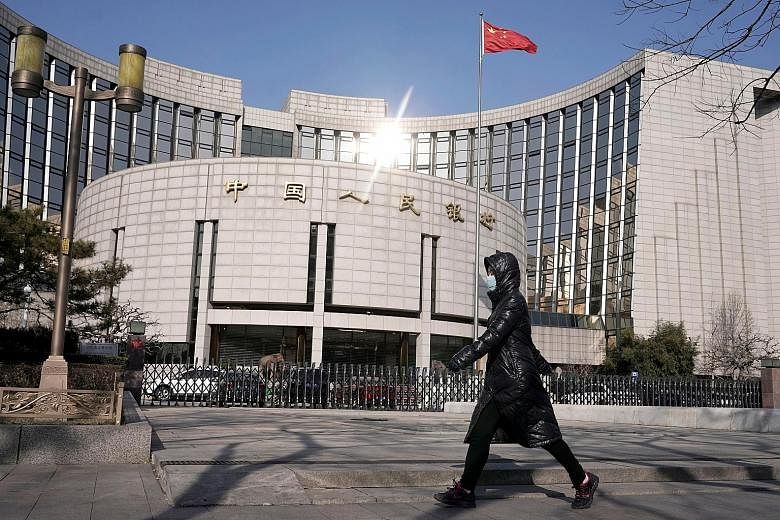SHANGHAI • China kept a benchmark lending rate unchanged yesterday, defying expectations for a reduction with the economy jolted by the coronavirus pandemic, although policymakers will likely need to loosen lending rates soon to free up funds.
The one-year loan prime rate (LPR) was left unchanged at 4.05 per cent from the previous monthly fixing while the five-year LPR remained at 4.75 per cent.
It helped prop up the yuan against the US dollar amid heavy selling this week, as the interest rate gap between China and the United States remained wide, following the Federal Reserve's surprise policy easing last weekend.
A majority of traders and analysts in a Reuters poll had expected the China rate, which is used to price new loans, to come down given the massive coordinated stimulus unleashed by global central banks.
Analysts said the surprise non-action suggests the authorities are broadly comfortable with the current policy settings for now after the central bank, the People's Bank of China (PBOC), last week cut the amount of reserves that commercial banks are required to hold.
However, many analysts see the need for more policy easing soon as economic risks grow.
"The lack of any cut this month means that the LPR is still only 10 basis points lower than it was at the end of last year, following a small cut in February," Capital Economics' senior China economist Julian Evans-Pritchard said in a note.
"But with the economy unlikely to get back on track until next year, further monetary easing will be needed to help address the continued strain on corporate and household balance sheets."
The virus crisis has gradually stabilised in mainland China with no new domestic transmissions reported on Thursday for the first time, raising hopes that strict containment efforts to stop the spread of the coronavirus are working.
But the situation overseas remains worrying. The Covid-19 epidemic has stunned the world and drawn comparisons with painful periods such as the 2008 global financial crisis and the 1918 Spanish flu pandemic.
Major global investment banks and institutions downgraded their forecasts for the Chinese economy. Goldman Sachs cut its estimate for first-quarter gross domestic product to a year-on-year contraction of 9 per cent, from a previous forecast of 2.5 per cent growth.
The LPR is a lending reference rate set monthly by 18 banks. The PBOC revamped the mechanism to price LPR in August, loosely pegging it to the medium-term lending facility (MLF) rate.
The central bank left borrowing cost on its one-year MLF loans unchanged on Monday, which would ordinarily suggest the LPR would similarly remain unchanged.
Investors and economists, however, saw the wave of global rate cuts and liquidity measures this week as adding pressure for China to do likewise, which is why many had expected an LPR cut.
Ms Jacqueline Rong, senior China economist at BNP Paribas in Beijing, said while banks face pressure to provide credit to struggling businesses, they are unlikely to lower rates unless properly incentivised.
"Commercial banks already face higher pressure to lower borrowing costs for virus-hit firms and support smaller business this year," she said. "Actively lowering LPR would inevitably give themselves more burden."
That suggests the PBOC will need to cut the MLF rate soon to allow commercial banks to lower their lending rates accordingly.
"We expect the central bank could lower the MLF rate by 10 basis points in April," said Founder Securities chief economist Yan Se in Beijing. "And if fluctuations in the stock market pick up further, we can't rule out chances for a reverse repo rate cut."
REUTERS

